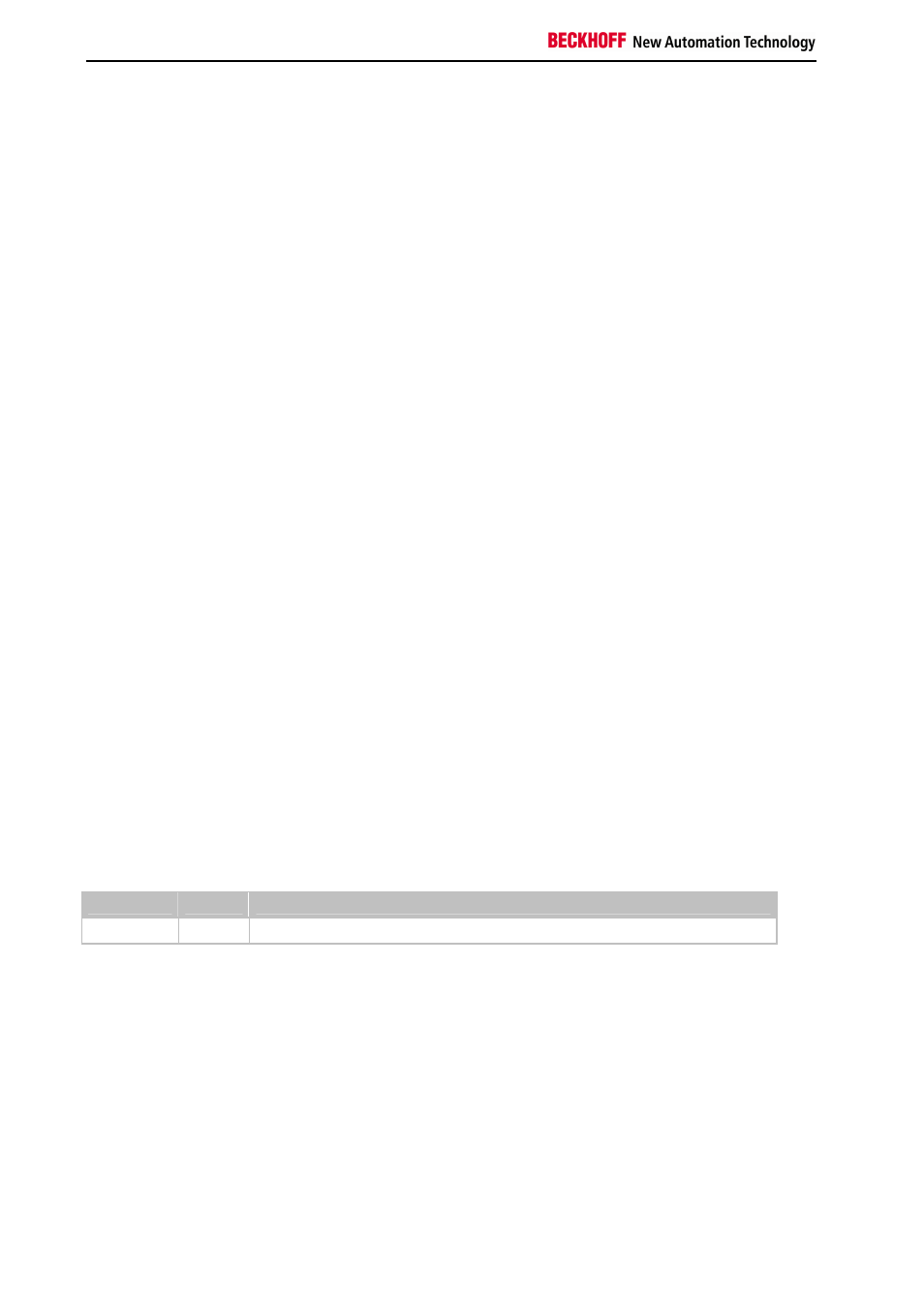Setting the multi-configuration mode, Rules for multi-configuration mode – BECKHOFF BK3xx0 User Manual
Page 78

Notes on the Documentation
76
Fieldbus Components
Multi-Configuration Mode
Applications of the multi-configuration mode
Multi-configuration mode can be used for the following types of application. A more extensive consideration,
considering, in particular, the various implementation levels of the Bus Coupler, is given in the Requirements of a
production machine.
Creating a DP configuration for various implementation levels of the Bus Coupler
If it is desired to use one PLC program to control different implementation levels of a process, it can be valuable to
work with the same DP configuration in spite of differences between the implementation-specific terminal
configurations. In this way the address offsets in the process image do not change, nor will the general DP
configuration of the Profibus DP master have to be saved again with every new implementation level. With the multi-
configuration mode it is now possible to define a maximum configuration for the Bus Coupler, and in this case it will
only be necessary to disable those terminals that are not present in accordance with the current implementation level.
Reserved Bus Terminals
Because all the analog terminals are configured first in the DP configuration, before the digital terminals, the
consequence of inserting analog terminals at a later stage is that the address offsets of the digital terminals are
shifted. The insertion of a digital terminal within the existing terminal structure (which can, for instance, be useful if
digital terminals with different input voltages are used) also has the consequence that the offsets of the digital
terminals that follow it are shifted. If a digital terminal is inserted before the end terminal however, the offset of the
existing terminals are not shifted. With multi-configuration mode it is now possible to configure additional terminals as
reserves at any location within the terminal structure.
Assigning the Bus Terminals to freely chosen process image addresses
Because digital terminals are always grouped into bytes, which therefore means that the smallest DP configuration
module is an 8-bit module, a difficulty arises when the associated terminals are to be distributed over a number of
bytes in the PLC process image. This is because in the PLC it is usually only possible to assign addresses for each
DP configuration module. With multi-configuration mode it is now possible to configure additional digital terminals as
"dummy" terminals at any desired locations, enabling the address offsets of the other terminals to be shifted in the
PLC process image.
Setting the multi-configuration mode
Multi-configuration mode is activated via the UserPrmData:
Byte
Bit
Description
3
4
1: Multi-configuration mode is active
Rules for multi-configuration mode
Multi-configuration mode requires a few additional rules to be observed, in addition to those for standard
configuration:
•
Only one DP module may be configured for each analog terminal
•
The digital terminals are to be declared as KLxxxx Multi-Cfg mode modules at their true position
•
The digital terminals are to be declared after the analog modules moreover as input/output sum modules,
corresponding to their bit width, as is also the case for standard configuration in the process image.
•
All modules for the maximum configuration, including the reserve modules, are to be declared
•
Modules that are not inserted must be disabled
